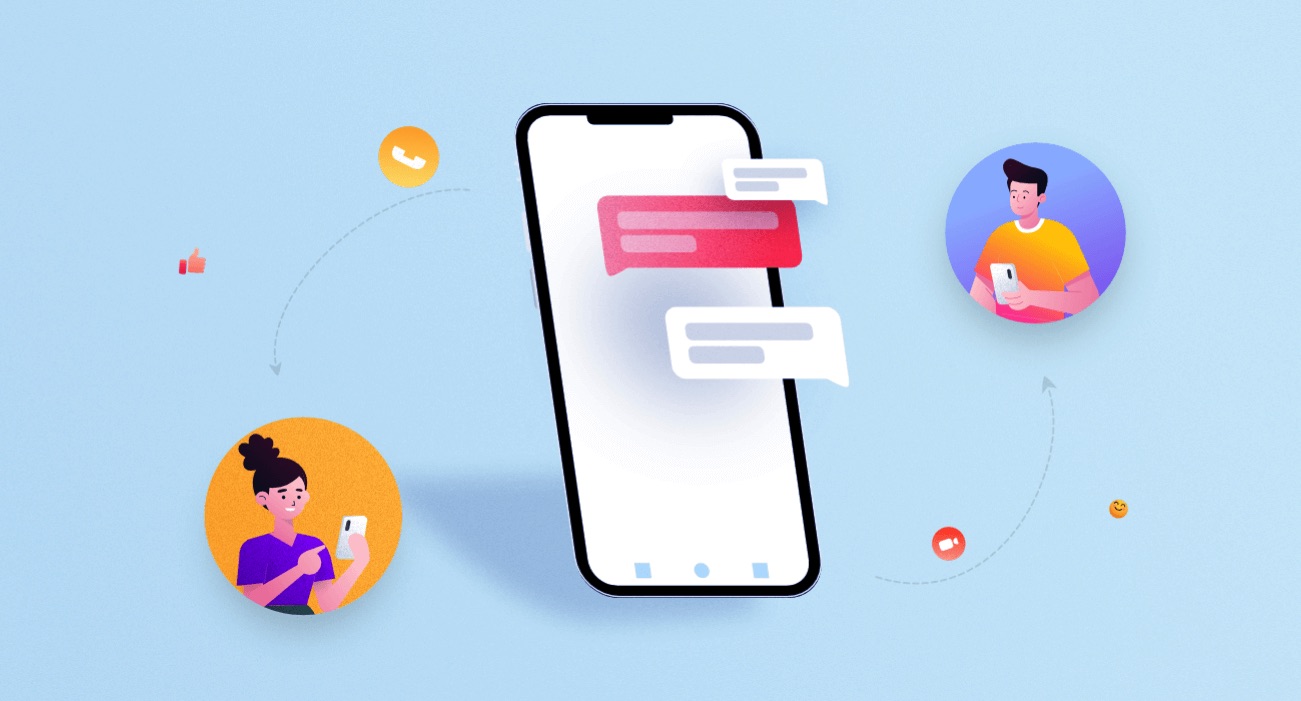AI for small business marketing promises the ultimate shortcut: faster content, automated emails, and chatbots that never sleep. For time-strapped business owners, it sounds like a dream.
But lately, that dream’s starting to feel a bit… off.
Every inbox, ad, and website is starting to sound the same. More efficient? Sure. More effective? Not always.
As AI floods the market, something else is rising with it: a craving for realness. Not just personalization tokens, but actual personality. Not just optimized subject lines, but something that feels like you.
That’s the tension we’re unpacking in this post. Yes, AI is powerful. Used carelessly though, it can drown out the very thing that sets your business apart: your voice. So let’s talk about how to use AI to support your small business marketing, not take it over. We’ll cover strategy, tools, common mistakes, and how to stand out in a world of automation without becoming another auto-response.
AI for Small Business Marketing: A Double-Edged Sword
AI has changed the game for small business marketing. In the right hands, it’s a powerful tool, cutting down on busywork, helping teams move faster, and unlocking creative momentum when you’re stuck staring at a blank page. But in the wrong hands, it’s something else entirely.
When everyone is using the same tools to do the same things, sameness starts to show. What began as a way to stand out becomes a fast track to sounding like everyone else.
That’s what we’re seeing right now. Automation is exploding across every inbox, ad, and feed. But alongside it, something more interesting is happening: a return to human connection. There’s a growing desire for communication that feels real. Not just personalized, but personal.
As Kris, our founder, puts it in the video below, AI is creating a kind of vacuum. The more efficient marketing becomes, the more people seem to crave something that still sounds human. We’re noticing a quiet renaissance: a shift toward more authentic, unscripted messaging and a renewed appreciation for the human touch.
The takeaway? The brands winning in this next wave of AI adoption aren’t the most automated. They’re the most intentional. They know when to lean into AI and when to leave it behind.
Where AI Helps Small Businesses Compete
- Speeds up content creation and iteration
- Lowers production costs for lean teams
- Helps organize ideas and automate routine tasks
- Levels the playing field with larger competitors
Where AI Can Hurt if Used Thoughtlessly
- Makes content sound bland or formulaic
- Flattens your brand voice if not customized
- May embed bias or inaccuracies from training data
- Adds environmental cost due to energy usage
How to Use AI for Small Business Marketing (Without Sounding Like a Bot)
There are plenty of tools out there (and we’ll walk through the best ones by use case in the next section). But first, let’s talk about something even more important: how to actually use AI well, because getting useful output from AI is about how well you train it to think like you.
Here’s the biggest mindset shift: treat AI like an intern, not a strategist. It can move fast, suggest ideas, and take the first pass. But it still needs your direction, your careful review, and your feedback. If you just drop in a vague prompt and expect brilliance, you’re going to get beige results.
At Flyrise, we’ve found the most effective AI workflows come down to a few repeatable strategies:
1. Use a Brand Messaging Guide as Your AI Foundation
Before we write a word of AI-assisted copy for a client, we build a brand messaging guide. This includes voice, tone, customer pain points, brand personality, and core positioning.
We then paste that into our prompt when working with AI. It gives the model real context. Not just what to say, but how to say it.
For example: “You are a marketing assistant for [company name]. Here is our brand messaging guide: [paste]. Use this to help write a blog post intro that’s warm, conversational, and speaks directly to [target audience].”
2. Customize AI Behavior with Clear Instructions
Most AI tools now support persistent instructions (like ChatGPT’s Custom Instructions). Use them.
Set defaults that define your brand’s tone (“professional but friendly”), preferred formats (“short paragraphs, no jargon”), and specific goals (“drive signups, not just awareness”).
Even with one-off chats, start every session with a clear role and objective:
- “You’re a content writer helping draft a case study for a nonprofit.”
- “You’re creating ad copy for a bold, direct e-commerce brand.”
You’ll save time, get better results, and avoid rewrites.
3. Give Strong Prompts (With Reference, Role, and Result)
Great prompts have three things:
- Reference: Something to model from (“use this blog post as a tone example”)
- Role: What the AI is acting as (“you are a copywriter at a modern agency”)
- Result: What you want back (“write a 3-line ad with a bold CTA and no fluff”)
Bonus tip: Tell AI what not to do.
“Avoid clichés. Don’t use overly corporate language. No bullet points.”
4. Rewrite First Drafts Like You’re Training a New Hire
You wouldn’t copy and paste a new intern’s first attempt at an email campaign and hit “send.” The same rule applies to AI.
AI gives you speed, but it doesn’t give you lived experience, real opinions, or original insight. That’s your job.
So, always edit for tone, structure, clarity, and brand voice. Pull in specific examples. Add the kind of perspective that only comes from actually doing the work. Make sure what you’re saying couldn’t have come from just anyone.
This isn’t just about sounding better. It’s also about being found. Google’s helpful content guidelines and E-E-A-T framework (Experience, Expertise, Authoritativeness, and Trustworthiness) make it clear that content needs to feel real and human to perform well.
AI content is just the scaffolding. Your voice and expertise are what make it valuable.

5. Use Templates (But Make Them Yours)
It’s fine to use templates as a base. But resist the urge to treat them as done.
Whether you’re using AI to write a newsletter, product page, or onboarding sequence, ask:
- Does this feel like us?
- Would our customers recognize this voice?
- Is there anything here we’d never actually say? If not, great. If so, rewrite.
6. Know When Not to Use AI
Lastly, no matter how well you manage to train and leverage AI, remember that not everything should be automated. AI struggles with nuance, emotional tone, and values-based messaging. If you’re crafting something personal, high-stakes, or deeply human, like a customer apology, a brand manifesto, or an origin story, be sure to write it yourself.
As Kris emphasized above, one of the most strategic things you can do in your marketing right now is choose not to use AI in certain moments. That contrast stands out.
The Best AI Marketing Tools for Small Business Efficiency
AI isn’t one-size-fits-all. The best tool depends on what you’re trying to do and how much context and oversight you’re willing to give. Below are some of the most practical AI tools for small business marketing, organized by goal. These aren’t flashy novelty apps. They’re the platforms we see actually saving time, generating ideas, and driving results when used well.
Copywriting and Content Creation
Best Tools: ChatGPT, Jasper, Copy.ai
Use these tools to brainstorm, outline, or draft marketing content like blog posts, newsletters, and website copy. Jasper is especially useful for recurring content like product descriptions or service blurbs, while ChatGPT shines when paired with clear brand inputs.
Good for:
- Brainstorming headlines and blog topics
- Drafting early versions of marketing copy
- Rewriting existing content in a new tone
Watch for: AI writing that feels flat or robotic. If you wouldn’t put it on your homepage as-is, don’t publish it from a tool either.
Email Marketing and Automation
Best Tools: Mailchimp AI, HubSpot AI, Constant Contact AI
These tools can generate subject lines, segment audiences, and even suggest send times based on behavior. They’re helpful for saving time, especially with promotional campaigns.
Good for:
- A/B testing subject lines
- Generating newsletter layouts
- Timing email sends for engagement
Watch for: Tone consistency. AI-generated emails often default to generic “marketing speak.” Always edit to sound like your brand.

Customer Support and Chatbots
Best Tools: Tidio, Intercom, Drift
These AI-powered chatbots help answer FAQs, assist with bookings, and route customer inquiries—all without needing a human on standby. Tidio is especially popular with small businesses for its simplicity and fast setup.
Good for:
- Answering repetitive questions
- Handling after-hours inquiries
- Directing users to the right person or page
Watch for: Over-automation. Customers can tell when a bot is pretending to be human. Make sure it knows when to escalate to a real person.
Ad Copy and Conversion Testing
Best Tools: AdCreative.ai, CopySmith, Jasper
These tools can generate multiple versions of ad headlines, calls to action, and image copy to help you test faster. AdCreative is ideal for visual ad units, while CopySmith is great for ecommerce-specific product ads.
Good for:
- Generating variations of ad creative
- Writing short-form copy for paid search or social
- A/B testing language at scale
Watch for: Misaligned tone. Ads that don’t reflect your true value prop may convert clicks, but not customers.
Real-World Example: Small Business Using AI for Marketing
The most effective AI use in small business marketing often isn’t flashy. It’s subtle, strategic, and focused on saving time without sacrificing voice or trust. These real-world examples show how AI can support small teams when used with discretion and clear boundaries.
Flyrise Client: Thought Leadership That Stays True to Voice
One of our Flyrise clients is a leadership coach and trainer who runs a thought leadership blog as part of his content strategy. To save time while keeping the writing true to his voice and expertise, we start with an SEO-optimized outline. He then records a Loom video walking through his thoughts, stories, and core points.
We use AI to help filter and organize his ideas from the video transcript into the outline, preserving his exact tone and structure. From there, our content team refines the draft, adds authoritative sources, and polishes it for final publishing.
The result is a blog that’s efficient to produce but still sounds like him, not a robot or a rookie intern. AI accelerates the workflow, but it’s never the author or thought leader.
Happy & Glorious: Overcoming Writer’s Block, Not Replacing Voice
Kate Tompsett, owner of the British gift shop Happy & Glorious, utilizes ChatGPT to assist in writing product descriptions and blog posts. While she relies on AI to overcome writer’s block and generate initial drafts, she ensures the final content reflects her authentic voice. This approach allows her to maintain brand consistency while saving time on content creation. She’s clear about the role AI plays. “I always reword it so it sounds like me, because my authentic voice is really important,” she told The Times. “But I just find it really helpful when I’m staring at the blank page.”
For her, AI is a jumping-off point, not a replacement for real human tone. It’s how she keeps marketing content moving while staying true to the brand.
Amarra: Scaling E-Commerce with AI-Powered Efficiency
Amarra, a New Jersey-based formalwear brand, uses AI across its marketing and operations, but always with human oversight. The team uses ChatGPT to draft product descriptions by inputting key features and selling points. Once the initial draft is generated, they refine each one to match the company’s brand voice and tone before publishing.
This process has reduced content creation time by 60 percent. The brand also uses an AI-powered inventory system to reduce overstock and AI chatbots to handle 70 percent of customer service inquiries. This allows their team to stay focused on more strategic and complex work.
Amarra’s approach shows how AI can improve efficiency without compromising identity.
The Best AI for Small Business Marketing Prioritizes Authenticity
According to a Gitnux report featured in our authentic marketing guide, 86 percent of consumers say brand authenticity is a key factor when deciding which businesses to support. That’s not a trend. It’s a clear signal that trust and relatability now matter just as much as, if not more than, efficiency.
This shift is showing up in real time. Kris recently ran a LinkedIn poll asking how people feel about AI-generated voiceovers in social content. About 75 percent said they were fine with it if the quality was high. But 25 percent said it was a turnoff. Not one person said they didn’t care.
That says a lot. Audiences are listening closely. They can sense when a message is crafted with care and when it feels like just another automated post.
So, how do you know when to lean on AI and when to leave it out?
Use AI when:
- You need help getting started with brainstorming, outlines, drafts, or summaries
- You’re scaling content that can be lightly customized with voice
- You’re working from clear facts or inputs (product specs, FAQs, etc.)
- You want to test variations or speed up a repetitive task
Avoid AI when:
- You’re writing something emotionally nuanced, personal, or values-driven
- You’re responding to customer feedback, especially if it’s negative or sensitive
- You’re defining or refining your core brand message
- You’re trying to build trust, not just get something out the door
And finally, ask yourself this before you publish:
Would I say this out loud to a real customer? Would it sound like me?
If not, revise. Or write it yourself. That’s what keeps your brand sounding real, even when you’re moving fast.

AI Marketing for Small Business Only Works When It Sounds Like You
AI is here. It’s smart. It’s fast. And it’s changing everything.
But speed without strategy is dangerous. And automation without intention is just another way to blend in.
The small businesses that will thrive in this next phase aren’t the ones pumping out the most AI-generated content. They’re the ones using AI to amplify what already makes them great: Their story. Their voice. Their values.
So before you hit publish on that next prompt, ask yourself: Is this really helping me connect?
Because the real edge right now is not just knowing how to use AI. It’s knowing when not to.




